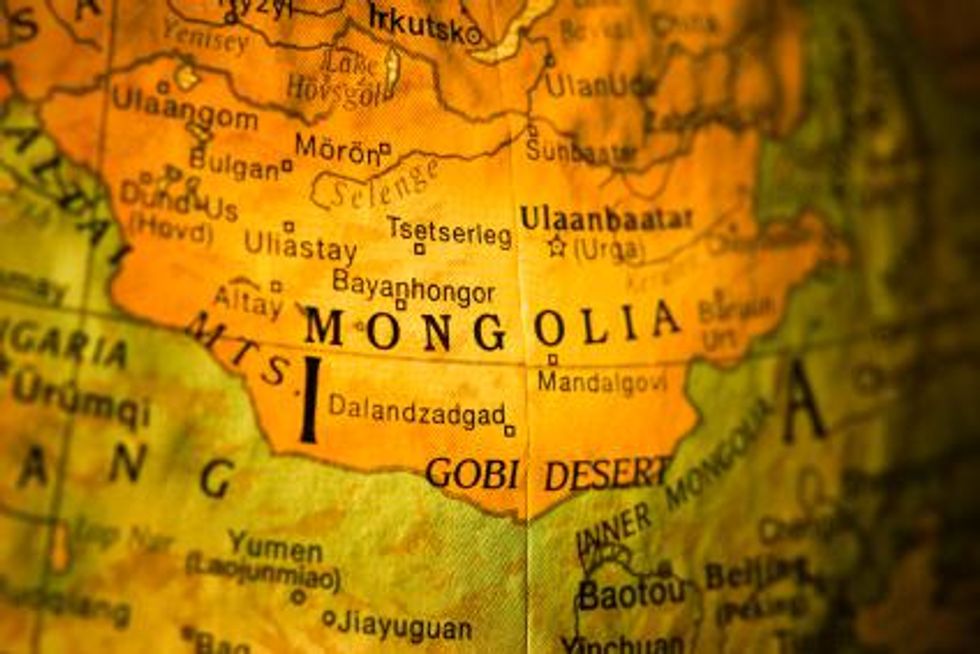Rio Tinto could be a few short weeks away from exporting metal from the Oyu Tolgoi mine in Mongolia.
Commercial production from Oyu Tolgoi is dependent upon ongoing discussions with the government of Mongolia, which chief executive Sam Walsh says so far have been “very productive and very constructive.”
“We are still looking for some approvals in relation to exactly how we transport and ship the material… that we expect to receive in the next couple of weeks,” Chief Executive Sam Walsh said on goldinvestingnews.comthe subject at the company’s annual meeting in Sydney.
Oyu Tolgoi
Oyu Tolgoi is controlled by Rio Tinto and two-thirds owned by its subsidiary Turquoise Hill Resources (TSX:TRQ). The project represents an important new source of growth for the company who is dependent primarily on iron ore. When Oyu Tolgoi is fully operational, the mine is expected to make up about a third of Mongolia’s economy by 2020 and produce 450,000 tonnes of copper and 330,000 ounces of gold per year when it is fully operational.
In early April, The Vancouver Sun’s Don Cayo spoke with Mongolia’s parliamentary president Zandaakhuu Enkhbold who was confident that an agreement will be reached to export copper. Enkhbold maintained that despite ongoing disputes between Mongolia and Turquoise Hill Resources, the parliament is committed to finding common ground.
Disputes between Turquoise Hill and Mongolia have come about as skyrocketing costs have the country — which has a 34 percent stake in the project — asking what happened to cause a $6.2 billion ticket price for Oyu Tolgoi. As of the beginning of May, a long-term budget has been agreed upon for operating on a month-to-month basis.
“I think we have moved well down the path in terms of resolving issues the government had tabled with us, enabling us really to move forward with the project,” Walsh said.
Offsetting supply disruption
With the start of exports from Oyu Tolgoi, Rio Tinto is looking to make up for a supply disruption in its operations as a result of a landslide at its Bingham Canyon copper mine — its largest mine — in Utah, after 150 million tonnes of copper fell back into the pit in early April. Rio declared force majeure at Bingham mid-month, removing liability from natural and unavoidable events. Towards the end of the month Rio restated the conveyor belt at Bingham and is looking to get back to normal operations.
The slide could cost Rio Tinto over $700 million in sales, according to Reuters, or about 20 percent for this year’s production. Rio is hoping that exporting from Mongolia will recoup some of the losses.
With today’s market, an increase in copper supply would come as the price of the metal has climbed despite worries about demand in China.
Copper prices on May 9 on the London Metal Exchange were at $7,354 per tonne at the close. Prices are down slightly from the previous session’s $7,419. The red metal’s recent high was on April 12 at $7,480.
Cutting costs
Like some of its peers, BHP Billiton (NYSE:BHP) and Vale (NYSE:VALE), Rio is under pressure to tighten its belt and potentially sell non-core operations. The company does not however expect the slide at its Utah mine will have any bearing on divestment decisions.
As far as trimming down its portfolio of assets, Walsh said that the board is reviewing several non-core assets and has already earmarked Pacific Aluminum and diamond units to go.
Securities Disclosure: I, Vivien Diniz, hold no investment interest in any of the companies mentioned.






